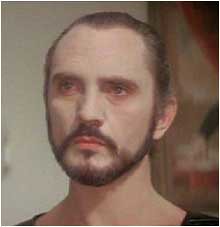Eskomedy
According to the Guardian, South Africa's utility, Eskom, wants to bring power to the world via a $50 billion run of river hydroelectric facility and related transmission programme from Congo to Europe. This is marginally more stupid than TransGas paying $700 million in exchange for lobbying help on a New York power station, if only because of the sums involved.
It's been very neatly presented, do doubt about it. The Guardian, playing up the stereotype, focused on the environmental aspect. And was duly rewarded with a story about how this project will rely on run-of river technology, which is much less disruptive than building a dam. The logic is definitely there, since Congo has few foreign export earners that cannot be stolen or destroyed, and the Inga rapids, on the Congo River, are a great resource.
There's even a quote from the CEO:
Only between five and 10% of Africa's population has access to electricity. That we consider lamentable in a continent that is abundant in energy sources.
Ho-hum. We would direct the attention of Eskom to events in Uganda, where AES once planned a ginormous hydroelectric plant at Bujagalli Falls, and subsequently bailed. The International Rivers Network issued a VERY tough-sounding press release at the time, which threatened to smack up Eskom if it even thought about looking at the project.
We're not sure how a $50 billion project, even twice the size of the Three Gorges, is going to find any takers. Three Gorges spent decades trying to find external finance for its project. It ultimately waited until China had developed a liquid stock market, and asked the local investors "do you care about flooding local communities, or 10% return a year?" They got the money, between $25 billion and $75 billion, depending on who you talk to. South Africa lacks the resources, indeed all of Africa lacks the resources, to fund the project.
Development banks max out at maybe $5 billion. Commercial banks will need insurance against anything happening in Congo, and against anything happening along the entire route of the project, which takes in Sudan and the CAR. But the kernel, we'll grant them, is there. A rehabilitation project, using the existing units, and the South Africans buying the power, that might work. The idea of linking up a number of desperately poor countries has also been tried before in Central America. The promoters? AES.




0 Comments:
Post a Comment
<< Home